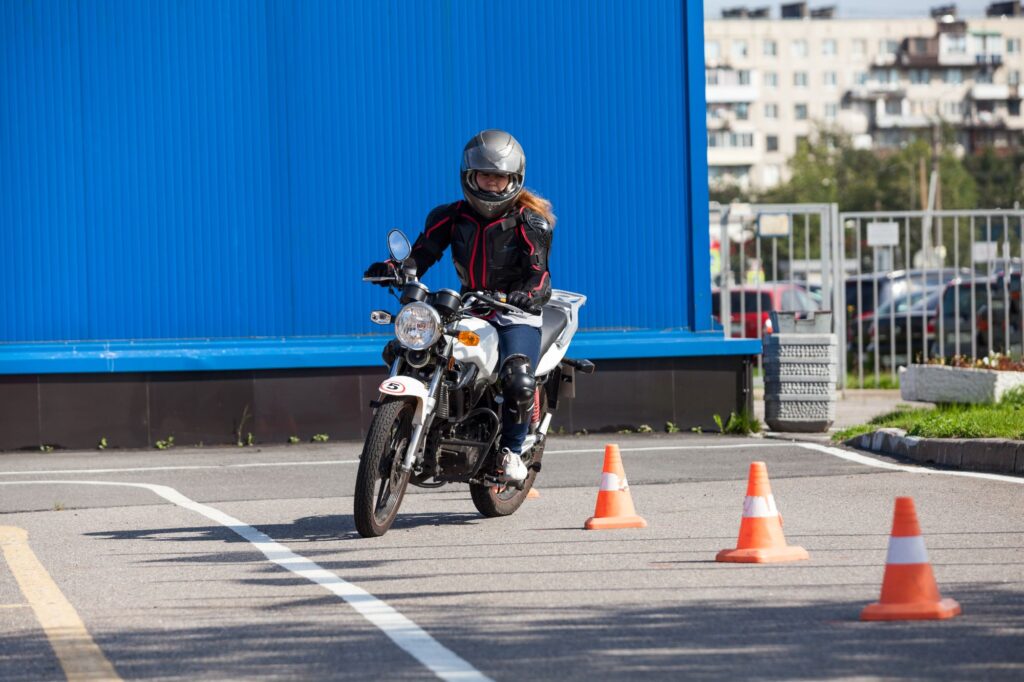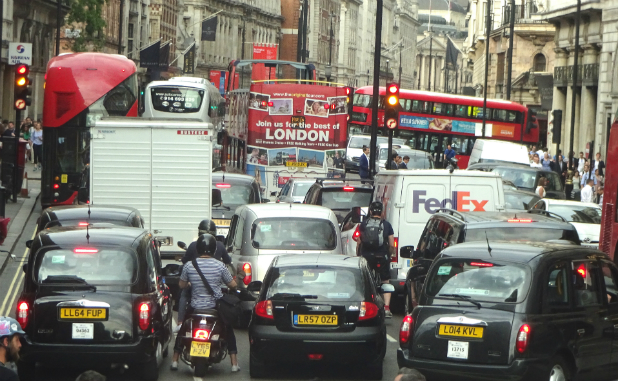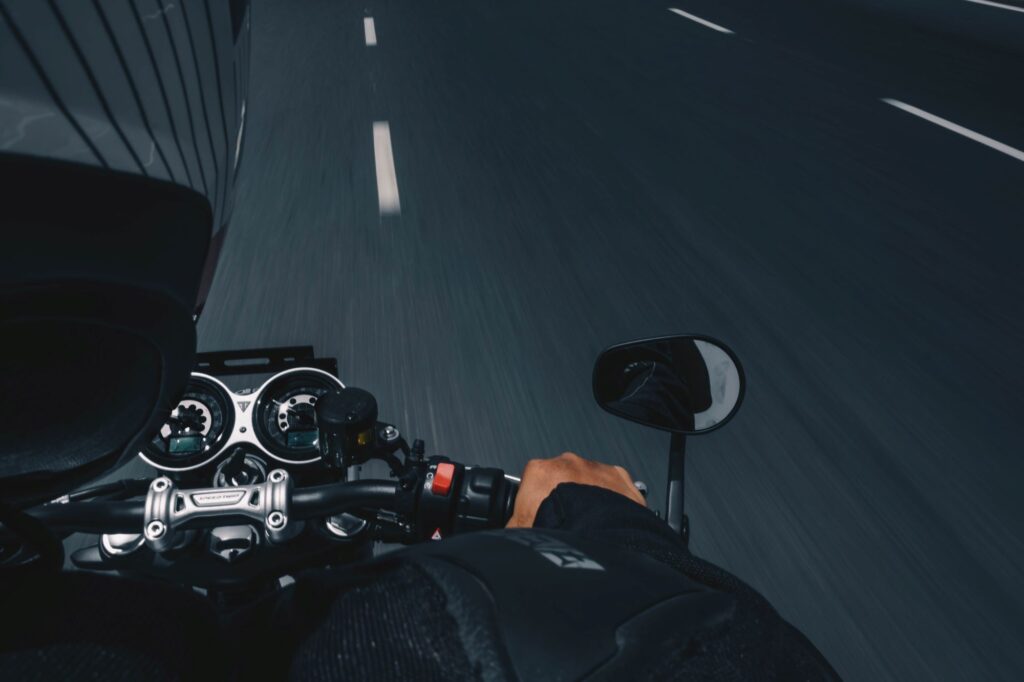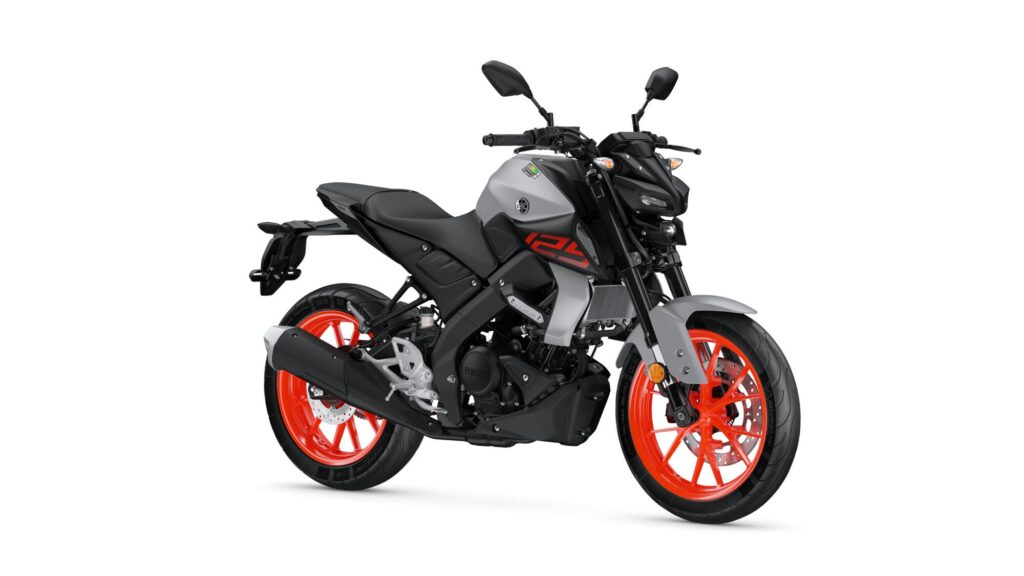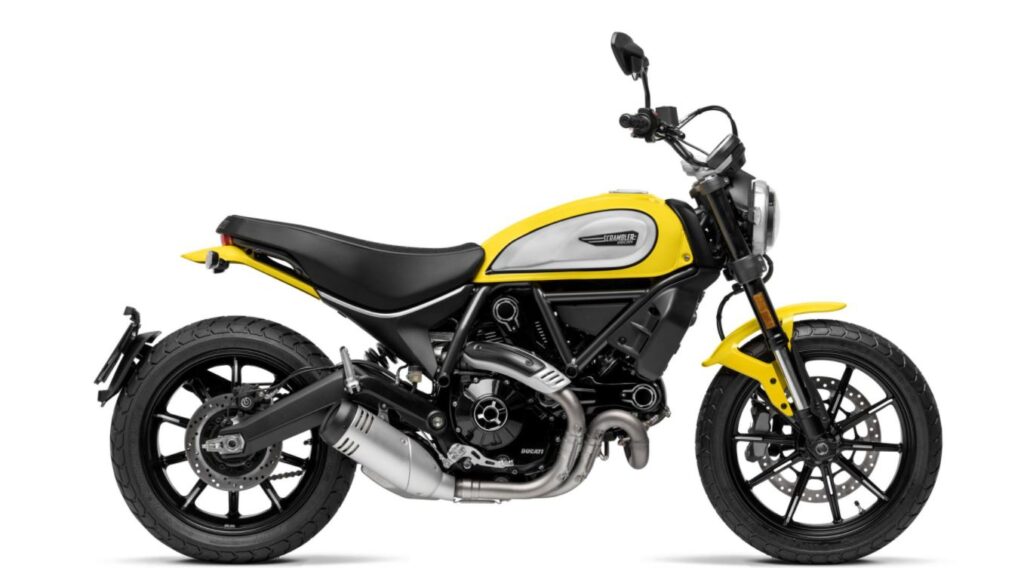Unless you’ve been studiously avoiding the news recently (and who can blame you for that, quite frankly) you’ll have heard about the unprecedented motorcycle crime wave affecting many of the UK’s cities, especially London.
The last few years have seen increasing numbers of gangs using scooters to rob and attack pedestrians and other road users. With growing numbers of people relying on their bike for their livelihood, safety and security has never been a bigger concern for bikers.
While things might not be so bad away from the capital, any motorcycle owner should think about the methods they use to keep their pride and joy safe. Join Bikesure, the freewheeling insurance broker, as we discover what you really need to know about keeping your bike yours.
Abandon all hope

The first and most difficult truth is this: if someone wants to steal your bike, they will. The constant arms race between the security industry and thieves reached kind of an impasse when the battery powered angle grinder was invented.
Even the biggest, most hardened chains will succumb to about a minutes grinding. While they may stop someone nicking your bike in public, with about 80% of all bike thefts occurring at home there’s a long way to go before you can feel truly secure.
Let’s deal with public security first. The Met Police recently launched a campaign to highlight the importance of visibly securing your bike. In a world where you’re basically trying to make your bike too much of a hassle to bother nicking, securing each wheel with a separate chain and/or lock may just be enough to stop it being taken. Other advice, like trying to leave it in a more public area, ideally with CCTV coverage, is pretty common sense. There is, of course, no way you’ll be able to do that 100% of the time.
Other tips are less obvious. For example, keeping the chain off the ground will make it more difficult for bolt cutters to gain purchase against it. The best place to lock your bike is the frame, with the rear wheel a close second. Locking the front wheel should only be a last resort, as it’s easier to remove this completely.
Use an UV marker and write the VIN, postcode and/or registration number on several parts of the bike. This could help in recovering it should the worst happen.
What about home security? The best case scenario is keeping it in a garage. At the very least not leaving the goodies in full view of every urchin passing your house is wise, if possible. It’s fundamentally about reducing opportunity and throwing as many impediments in the way of anyone trying to nick your stuff as possible.
The least worst option
So, what do you need to know about choosing the equipment most likely to slow down the nasty lads? The police recommend you spend about 10-15% of the value of the bike on security equipment, which seems like a lot because it is. The biggest, toughest chains will set you back somewhere in the region of a couple hundred quid.

Chains
Toughest chain is a particularly difficult concept to fully quantify, as nobody’s going to market a chain by saying that your arthritic grandad could break it. Marketing fluff aside, the general rule of thumb is any chain less than 16mm is vulnerable to bolt cutters, albeit a big bolt cutter wielded by burly types. Just because it can be defeated doesn’t necessarily mean that it will in a real-world attack. That said, the bigger the better is a rule of thumb that won’t let you down too often.
Almax
Almax is a family firm, started by bikers for bikers. It designs chains to be strong as heck, ideally suited for that all-important garage security. The heaviest chain is the Immobiliser V, a 22mm diameter monster with each link weighing over 1kg. If that’s a bit too enormous for you, the Immobiliser IV is a mere 19mm, weighing just over 6kg per metre. These aren’t portable chains unless you’re the actual Hulk, so their 16mm series III is a mere 6.6kg over one and a half metres. A baby’s chain, for sure, but one that is still hopefully tough enough to discourage at very least the bolt cutting brigade.
Pragmasis
The world of boutique chain manufacturing is surprisingly bitchy, as you can see from Pragmasis’s about us page. It’s almost certainly throwing a little shade at Almax with talk about giving instructions to thieves – Almax has a wall of shame where they show how easy it is to defeat their competitor’s products.
Pragmasis’ line of chains has the 22, 19 and 16mm chains as well as 11 and 13mm travel chains. The 19mm chains are used by the Ministry of Defence and NASA, which is a good sign of a seriously tough chain.
Abus
One of the big names in the world of locks and chains, Abus are a German company founded in 1924. They offer a comprehensive range of security products, including locks and chains for motorcycles. These are definitely more for securing your bike when out and about, and with the chain sizes being below the crucial 16mm said to make bolt cutting close to impossible these are suited more for the cheap end of the scooter spectrum rather than making sure your giant hog stays put. Some models include alarms, being able to buy a number of security measures at once may well be appealing to people just looking for a simple off-the-shelf solution.
Squire
If you want to make your chain purchase a patriotic one, Squire has been making locks in the UK since 1780. In fact, the company invented or perfected several kinds of padlock. Indeed, Pragmasis uses squire locks, and some of the Squire chains look very close to Pragmasis chains although, let’s face it, there’s only so many ways you can make chains.
Kryptonite
Eyyy, I’m lockin’ my bike here. Kryptonite is a brand that makes quite the thing about how its products are New York safe. This is, of course, the kind of hyperbole that only impresses farmland rubes who get panicky when they see more than three people in a street. Or, indeed, a street. Regardless, they do make some pretty sturdy locks and chains. In terms of size they’re not the largest, so if you’ve got a bigger bike you’re probably going to want to look elsewhere but for scooters and smaller capacity bikes they’re a pretty solid choice. Again, everything bar an angle grinder will probably be stopped. Probably.
PJB
Another heavy hitter for home use, the 19mm Untouchable is a huge lump of chain.
Ground Anchors
You can have the strongest chain in the world but if it’s not attached correctly then it’s pretty useless. Installing a ground anchor is a bit labour intensive, but especially if you’ve got a decent bike it makes an awful lot of sense. As well as their chains, Pragmasis provide the Double Doofer, which is the only removable ground anchor with police approval. Many products need to be concreted in to the floor, which isn’t practical if you’re renting. This can be screwed in with relative ease, and taken with you as necessary. If you’ve got carte blanche to drill holes wherever and are using one of the bigger chains, something like the Torc ground anchor combines extreme strength as well as flexibility in where it can be sited.
Another satisfyingly solid looking product is Oxford’s Ultimate anchor. The name is slightly confusing as it says the maximum chainlink size it fits is 14mm, which as we know might as well be warm butter to anyone with a bolt cutter, but it’s still going to put up a valiant fight.
People with the wherewithal to dig up chunks of floor have the option of a tube anchor. No cat videos, but a sturdy steel tube for running a chain through the floor, providing near unbeatable stability. Yanchor make a great example of this product, and also have quite a funny name.
Padlocks
Right, so a lot of the chains you’ll get will come with a lock, and the companies that make a lot of noise about the strengths of their chain generally provide locks that are a good match for their products. If you want to choose your own, then obviously the bigger the better. The Bikesure top tip is, pick a lock (har) with a closed shackle. These are significantly more difficult to bust up than one where the whole shackle is accessible.
Disk Locks

While a chain offers you pretty much the best you can hope to expect, it’s very much a case of the more the merrier in terms of security devices. Disk locks make either a great additional layer of security or good alternative for anyone not wanting to carry a chain the weight of a small child.
Oxford
This British manufacturer has a strong reputation for its products, and supplies a pretty comprehensive range. Disk brakes like the Alpha XA14 have an inbuilt alarm and a rather natty stainless steel shell. They also offer a unit designed to fit on scooters, or an extra-large version for you big bike havers.
Mammoth
Alarm bells should probably be going off in your head if you see plenty of listings for a company’s products but they don’t appear to have a website. Mammoth is everywhere when you search for various security products but with no website it’s difficult to properly evaluate the company. If we use the gold standard of internet fact checking – years old forum posts – then Mammoth is not particularly great. The products will probably be offered as a great deal, and they could well save you a few quid, but you can definitely do better.
Xena

Without wanting to judge the quality of Xena’s products, this blog highlights the importance of choosing the right product for your bike. Looking at the description on their website it mentions that it’s ideal for smaller motorcycles. The guy’s blog doesn’t mention what bike he had, but the comments mentioning how powerful engine torque could easily snap the metal suggests that his bike was too powerful for the lock he chose.
Useful reminder
Imagine the hilarity, forgetting to remove your disk lock before driving away! Luckily there’s products to help you avoid this, memory cables. Maybe you should get one.
Trackers

So far, so relatively low tech. If chains and locks don’t stop your bike being nicked, there’s still things you can do to help the police recover it. Modern tracking units can be set up to text you if something happens to the bike they’re installed on, with some also automatically alerting specialist teams who can co-ordinate with the police if required.
Some units require wiring, which will limit the number of places they can be positioned. Self-contained units like the Dantracker Spy don’t have wires, providing some leeway in positioning. As with 90% of modern gadgets it’s got its own app, which lets you remotely monitor what your bike’s up to while you’re away.
Biketrac is a similar product, but it’s a UK company. As is Tracker. If you’re a regular visitor to Europe you should try and choose a tracker that works over there, as some have incomplete coverage.
There are some things to consider though. Thieves know how this stuff works, and how to defeat it. You need to make sure it’s installed correctly and hidden well. Choosing a motorcycle tracker with an internal power supply will make it more difficult for thieves to locate, plus it’ll mean it can keep working if the battery is removed. Oh, plus it won’t be constantly draining your battery.
Marking your territory
Products like Datatag use individually coded circuits which can help police to identify your bike, or parts of it, if they turn up post-theft. Or at least, they can, if you’re in one of the areas where the police use the system.
An alternative is this micro dot based system, which uses a UV reactive glue, so you don’t have to worry about not being able to find the microscopic identification dot.
Want another method of marking your bike with SCIENCE!!!? How about some smart water? Yes, the same thing that shops use to tag their items is now available for you to wipe all over your belongings. It uses nanotechnology, which is one of those slightly overused sciencey terms that isn’t quite as cool as you might think, but it does mean that anyone sprayed with it can be easily identified.
To sum up:
- If someone really wants to nick your bike, they will.
- You can spend a lot on security products that may well be completely useless.
- You’ve still got to do it, especially if you’re insured
- Layers of security work best: don’t put all your eggs in one basket.
- Make sure it’s locked to something.
- Don’t leave your expensive bike on the damn street.
You May Also Like …
Motorcycle safety tips from Bikesure experts including Carl Fogarty & UsernameKate

